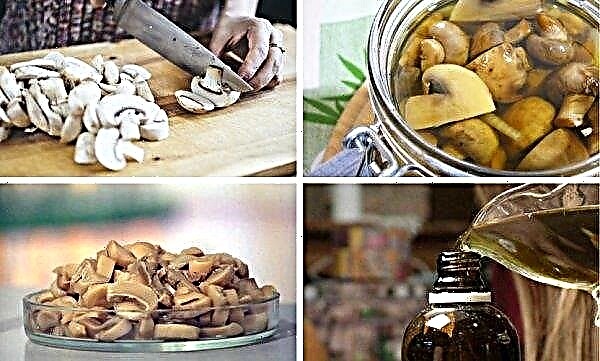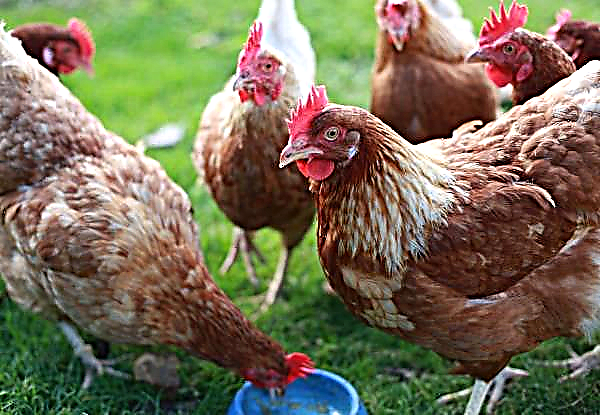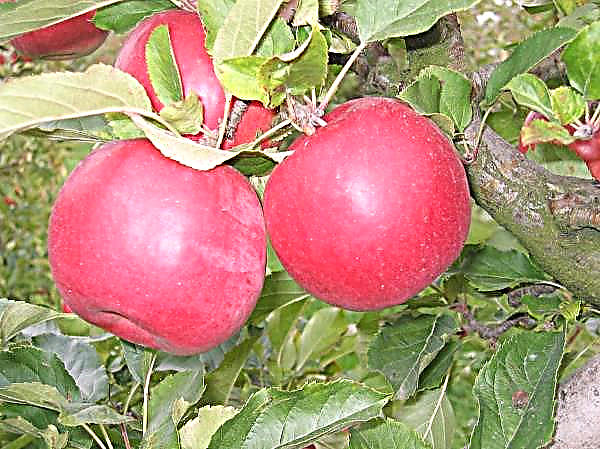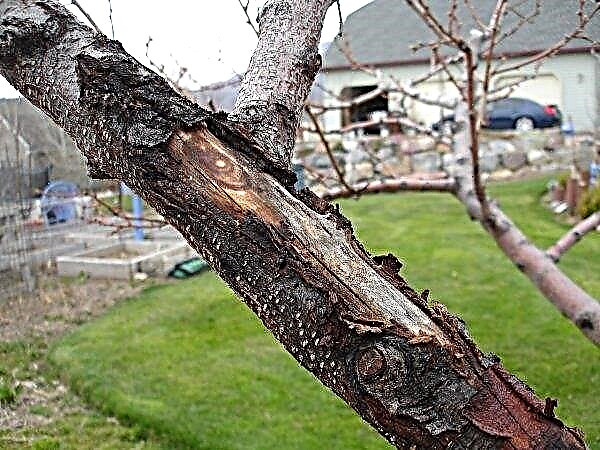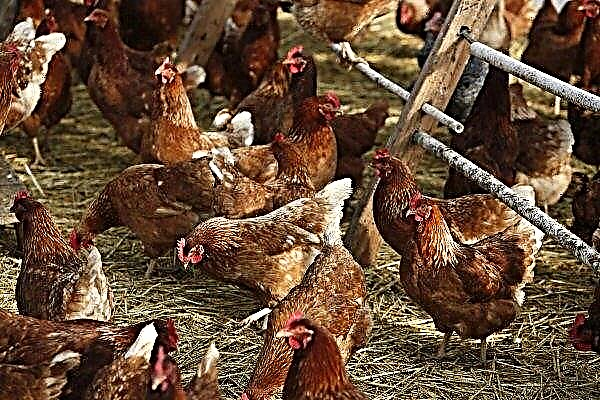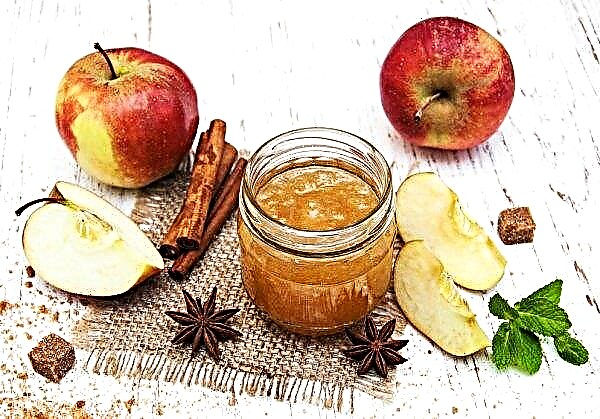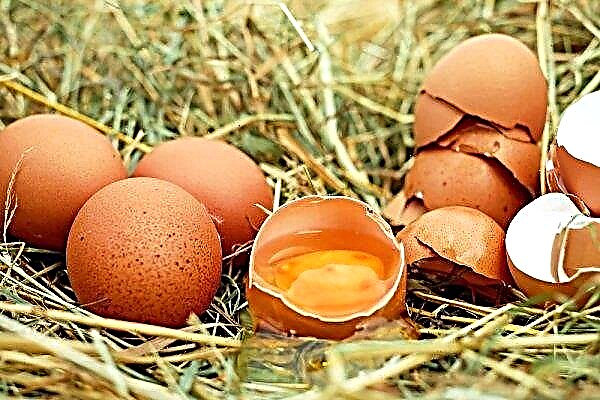In urban conditions, a variety of rooms are used for storing potatoes: from the insulated balcony in the apartment to the garage. If possible, it is best to store the harvested vegetables in the basement or cellar, but it is important to properly prepare the room and create the appropriate microclimate in it. In the wrong storage conditions, the tubers can begin to deteriorate quickly and cannot last until spring. In the article, we will consider the basic rules for arranging a cellar for long-term storage of potatoes, tips for preparing tubers and possible errors in storing the crop.
When to pick potatoes in the cellar
After the tubers are dug from the ground, they are dried and sorted. It is recommended to lower the fruits into the cellar only 14–20 days after harvesting.
It is important to observe the following conditions:
- you need to clean the tubers in the cellar before the start of the rainy season and night frosts;
- carry vegetables preferably in sunny weather;
- outdoor air temperature should not be lower than + 5 ° С;
- you need to move the potatoes to the cellar carefully so as not to damage the tubers, as the fruit will quickly deteriorate from shock and mechanical damage.
Did you know? Potato tubers contain a toxic substance - solanine. It accumulates in fruits under direct sunlight and can cause poisoning.
The best varieties for long-term storage
In order to get an early harvest, the gardener chooses early-ripening varieties for planting, but they are completely unsuitable for long-term storage and quickly deteriorate even in a perfectly equipped repository.
Potato varieties with medium or late ripening are best stored in the cellar. At the same time, the fruits do not lose their attractive appearance and retain good taste until spring.
The best varieties suitable for winter storage include:
- Picasso. The variety is a record holder for shelf life. The tubers are oval and have a smooth beige peel. The weight of one fruit can reach 100 g. The fruits have a great taste and contain a minimum of starch.
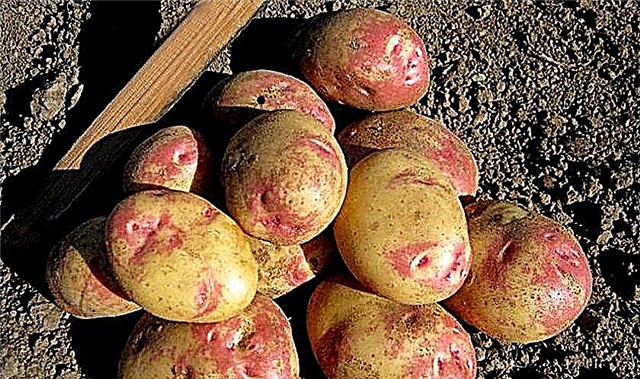
- Asterix. Potatoes of this variety have an oblong shape and are covered with red peel. The pulp of tubers contains about 16% starch and has a good taste. The mass of one fruit is about 100 g.

- Atlant. This variety was bred in Belarus and is perfectly stored in the cellar until spring. Fruits are rounded, with a light brown skin, contain 18–20% starch. The pulp of the tubers is very tasty and does not darken in the air.

- Vesnyanka. The fruits of this variety are round and not very large. The peel has a pink tint, and the flesh contains 20% starch. The pulp of the tubers is cream colored and tastes good.
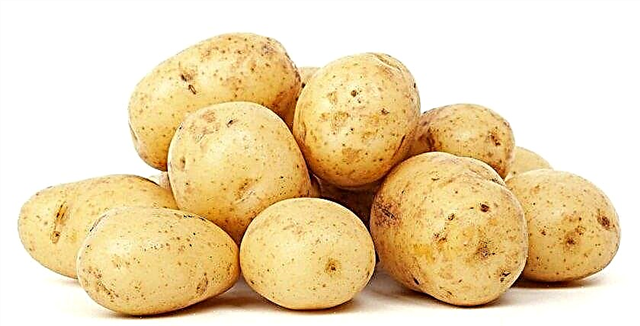
- Scarlett. The variety is early, but can be stored in a well-equipped cellar until the end of February. The tubers are oval, their mass is 100-150 g. The peel of the fruit is smooth, has a red color. The pulp is grainy and tasty, contains 16% starch.
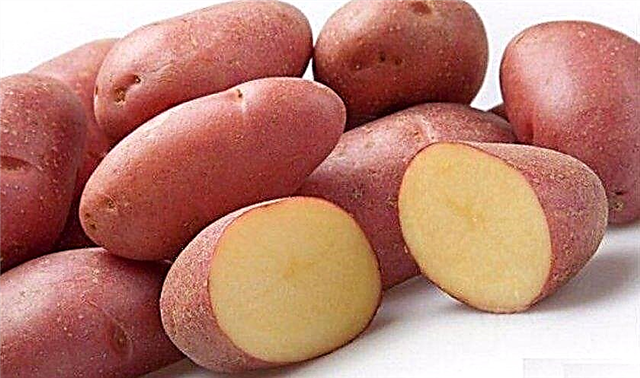
Optimal temperature and humidity in the cellar for storing potatoes
Even those varieties that best withstand long-term storage can deteriorate in the cellar with inappropriate microclimate conditions.
In the cellar, you need to create such conditions that are best suited for storing the root crop.
Consider the basic requirements for the indoor microclimate:
- the cellar should be dark so that the tubers do not germinate ahead of time;
- the room should be dry and have ventilation openings for ventilation - this will prevent fruit rot;
- optimal air temperature is +2 ... + 4 ° С. In a too-warm cellar, tubers sprout, and in extreme cold they can freeze and get a sweetish aftertaste;
- humidity should be around 75–85%. In a storehouse with dry air, vegetables rapidly lose moisture and wither. In the damp basement on the tubers mold quickly appears.
To control the temperature and level of humidity in the room, thermometers and humidity meters are installed.Important! To ensure the safety of the crop, you need to control the temperature and humidity level of the air in the store.
You can adjust the microclimate in the cellar with potatoes using the following actions:
- to lower the air temperature, it is necessary to open stranglers or place containers with frozen water around the potato, which, when thawed, will cool the air in the store;
- if the cellar is colder than required, then the tubers are covered with a warm blanket or containers with hot water are placed around them;
- to reduce the humidity, put containers with slaked lime or lay beets on top of the potatoes;
- To increase humidity, you can spray the walls of the storehouse with water.

How to prepare a cellar for storing potatoes
Potatoes are quite picky about storage conditions, as they contain a lot of starch and water. Accordingly, before laying the harvest for storage, you need to pay special attention to the preparation of the cellar. It is best to do it 1–1.5 months before the harvest.
Preparatory work in the cellar includes the following actions:
- Check and clean all vents to ensure good air circulation in the room.
- Waterproofing the floor if it is too wet or near the surface of the soil are groundwater.
- External insulation of the cellar for protection against severe frosts and overheating. The ideal option is to build a small cellar above it, which will protect the storage ceiling from high and low air temperatures.
- Door Leak Proofingthat closes the storage so that it does not pass drafts. Outside, it is recommended to sheathe it with polystyrene for better thermal insulation.
- Additional heating in the cellar with the help of dark-colored lamps hung in the corners of the store. When turned on, they will radiate heat, which will help protect the cellar from freezing during severe cold weather.
- Removing garbage and excess trashwhich takes up a lot of space and can attract rodents.
- Removing holes in the walls or floor of a room using cement mortar or a durable metal sheet to prevent the risk of rodents.
Did you know? The homeland of potatoes is South America: there it still grows in the wild.
Room processing
So that the potatoes in the store can maintain a good look and taste until spring, you need to carry out the correct processing of the room. This procedure allows you to get rid of microscopic harmful bacteria and extend the shelf life of potatoes.
Video: Processing the cellar before laying vegetables
The main recommendations for processing the storage are presented below:
- the walls must be well disinfected with a solution of 10 l of water, 2 kg of lime, 150 g of salt and 1 kg of vitriol. Bulk ingredients are dissolved in water and treated with the mixture, the ceiling, floor and all walls of the room;
- processing the cellar with a sulfur checker. It needs to be brought into the room and set on fire so that the smoke permeates all the walls, ceiling and floor of the store;
- if the previous potato harvest during storage in this cellar was covered with mold, then disinfection should be carried out twice with an interval of 7-8 days.
Important! Storage processing is best done in warm and sunny weather, so that the room is well ventilated, and wet walls dry out faster.
Preparing storage tanks
The simplest option for storing vegetables is to place them on the cellar floor in the form of one large pile. But if there are at least a few damaged or rotten fruits among the tubers, then they will cause the appearance of rot on most of the rest of the potatoes, so it is better to store the crop in specially prepared capacious containers.
They must meet the following requirements:
- the best material for making containers for potatoes is wood;
- the box and the container for vegetables should have openings through which ventilation will be carried out. You can place the boxes in horizontal rows located on wooden supports, or put them on top of each other;
- Separate fabric bags are also suitable for storing tubers, which pass air well and protect fruits from rotting. Bags should also be placed on wooden pallets 10-15 cm high from the floor;
- potatoes in the cellar can be stored in nets, but tubers can freeze in them. To prevent this from happening, nets with vegetables are covered with a layer of straw or a warm blanket.

Good preservation of the crop contributes to the pre-treatment of containers for storing potatoes. It is best to carry out this procedure in warm and sunny weather.
Processing is carried out in this way:
- All containers for potatoes are taken out to the street, cleaned of the earth and the remnants of last year's vegetables.
- For disinfection, the container is treated with a hot concentrated aqueous solution of potassium permanganate.
- Leave the containers in the sun until completely dry, and then bring them back to the cellar.
Important! The small size of these containers helps to divide the potatoes into small portions and reduce the risk of losing the entire crop due to the rotting of several tubers.
Features of the preparation of tubers for the bookmark
In addition to the proper arrangement of the cellar, you also need to pay attention to the preparation of the tubers themselves for long-term storage. This will protect the crop from mold and rot.
The process of preparing potatoes consists of the following stages:
- Manual cleaning of tubers from adhered pieces of land. Washing the fruit is not recommended.
- Drying the fruit in the sun for 2-3 hours, and then on the street under a canopy or in a dry room with good ventilation for 14-20 days.
- Sorting potatoes by shelf life - those varieties that are stored the worst are stacked separately and used first.
- Removing damaged or damaged tubers.
- Sorting potatoes by size - large tubers need to be stored in separate containers for eating, and medium ones should be set aside for spring planting.

Potato storage in the cellar
Typically, before the beginning of March, tubers are in a state of vegetative dormancy, i.e., they do not germinate and maintain their hardness. But with the advent of spring, potatoes will inevitably begin to be covered with sprouts, which will draw a lot of moisture from it and make tubers lethargic. Therefore, before laying vegetables in the cellar, you need to know how much you can store them and when the fruits will begin to deteriorate.
The duration of storage of the vegetable in the cellar in compliance with all the described microclimate conditions directly depends on the type of potato. Those varieties that produce early crops begin to produce sprouts in February. At the same time, the taste of tubers deteriorates, often they begin to rot even before the appearance of sprouts. Accordingly, it is recommended to store early potatoes only until the middle of winter and use it first.
Late potatoes can remain unchanged until mid-spring, if you use a few tricks:
- with the early appearance of sprouts, remove them manually;
- lower the air temperature in the cellar to + 1 ° С;
- place containers filled with ice around the perimeter of the storage.
Did you know? One of the most original types of potatoes is the German variety Linzer Blaue. The pulp of its fruits is colored blue.
Common mistakes
Sometimes potatoes quickly begin to deteriorate even in a well-equipped cellar with a suitable microclimate. The reason for this phenomenon may be some mistakes that are made when growing, harvesting and storing crops.
These include:
- planting early ripe varieties that are poorly stored;
- lack of sorting, when different varieties of potatoes are stored together, and not separately;
- storage of low-quality or damaged fruits with good tubers;
- lack of preventive examinations of vegetables during the winter;
- violation of the microclimate in the cellar;
- storage of tubers in one large pile, poured directly on the cellar floor.

If you have a private home, storing potatoes in the cellar is the most convenient option. If you follow all the recommendations described in our article, the root crop will be successfully stored until spring.










